Spin Off editors are hard at work reviewing submissions, curating new content, and editing articles for the next press cycle as the calendar turns to a new year. But we take time for play, too! With crafting for the holidays behind us, are you itching to try something new? Here are our top 10 picks to try in the new year.
Spin Off Editor, Kate Larson
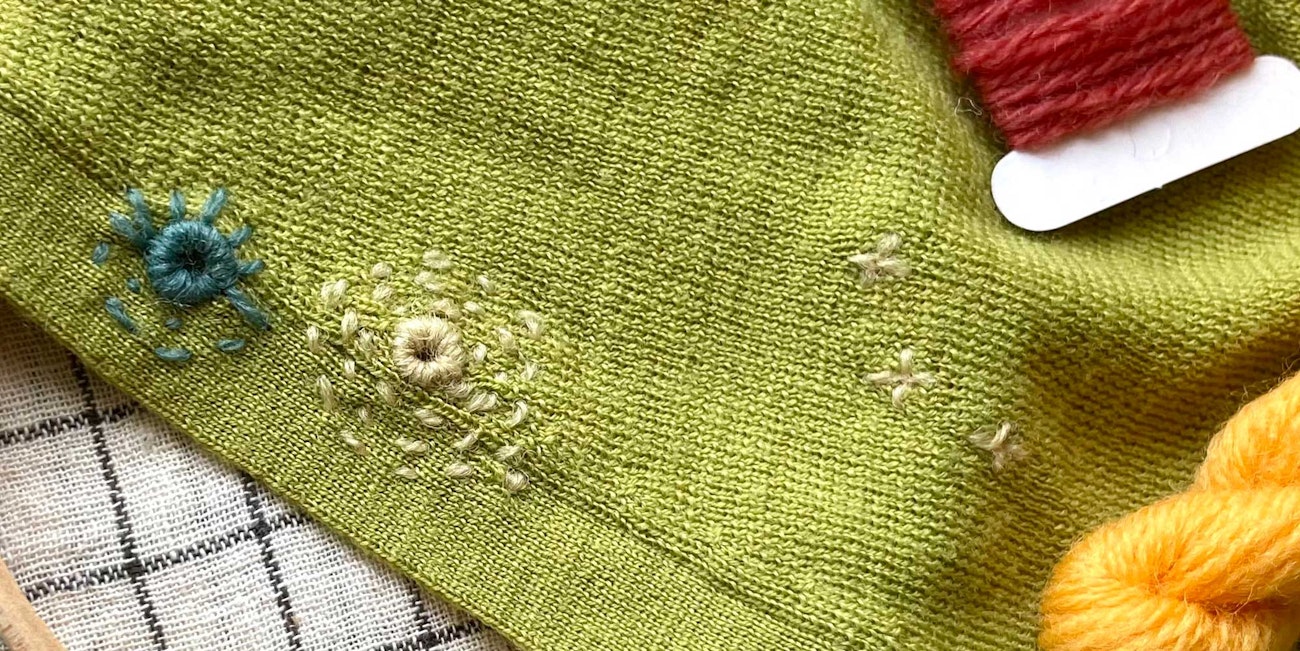 Kate uses her handspun to repair, mend, and strengthen a favorite sweater. Photo by Kate Larson
Kate uses her handspun to repair, mend, and strengthen a favorite sweater. Photo by Kate Larson
1. Mend Boldly
Like all things, mending takes practice. With practice comes skill, but speed and confidence, too. On my to-do list for 2025 is to mend boldly. I love strident mends that add a bit of handspun color and texture to my clothes and home, but I often spend too much time mulling over my approach and materials. Days—weeks—slip by! I have to laugh at my worries about “ruining” a sweater that is currently unwearable because my mend might not be perfect. No more—I shall mend boldly. Will you join me?
Here is a post about choosing fibers for mending, and I created a short video tutorial about using a darning loom. There’s loads more in Spin Off’s “Mend, Renew & Make Do” issue from Summer 2023.
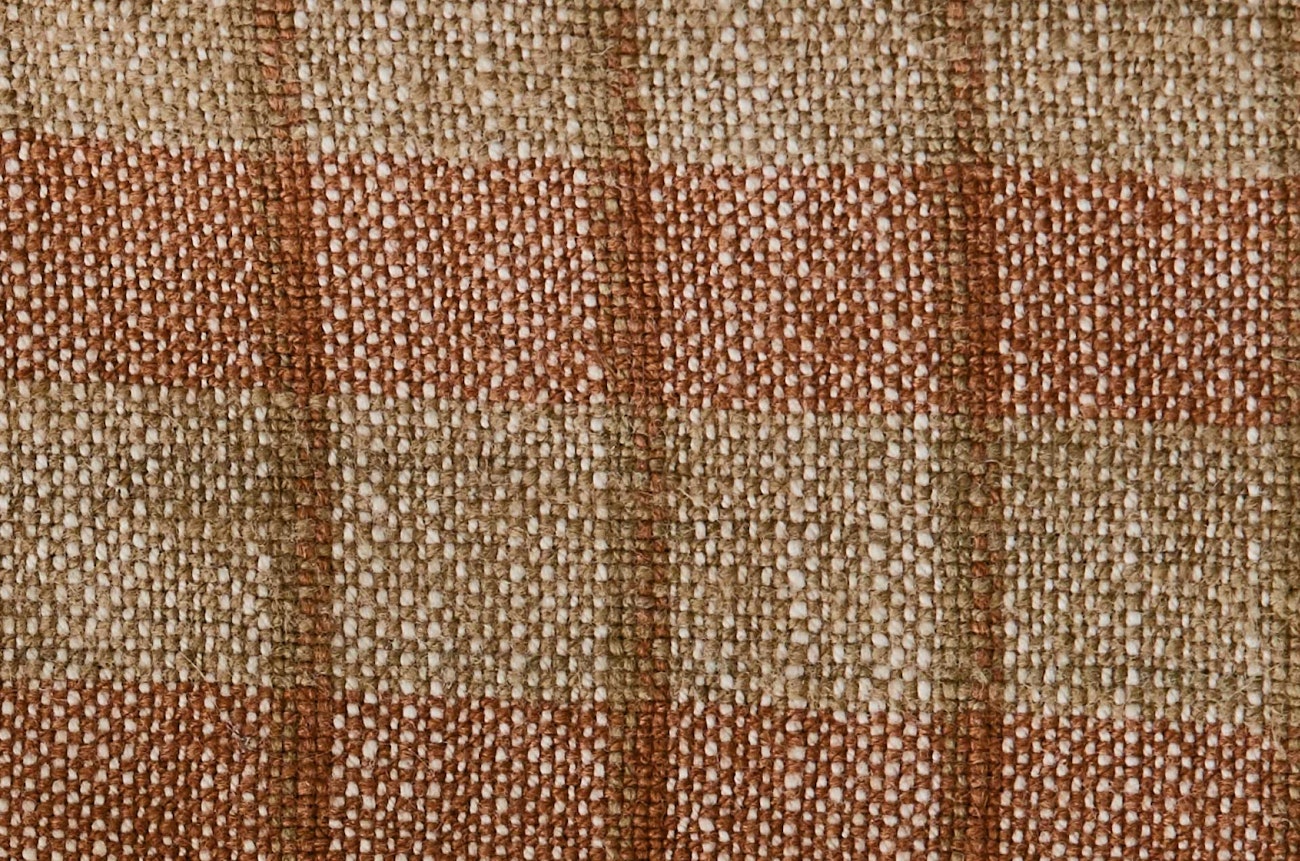 Devin Helmen uses handspun cotton in their weaving. Photo by George Boe
Devin Helmen uses handspun cotton in their weaving. Photo by George Boe
2. Warping & Weaving with Handspun Cotton
I love spinning cotton—primarily on my charkha, but also on supported spindles and e-spinners. Most recently, I’ve been stitching and knitting with my handspun cotton yarns. But then I came upon Gisela Evitt’s sweet cotton dish-towel article in the All About Cotton eBook, and I’m inspired to gather my cotton odds and ends to weave towels for my loved ones. The eBook also includes knitting and crochet patterns—it’s free in the library!
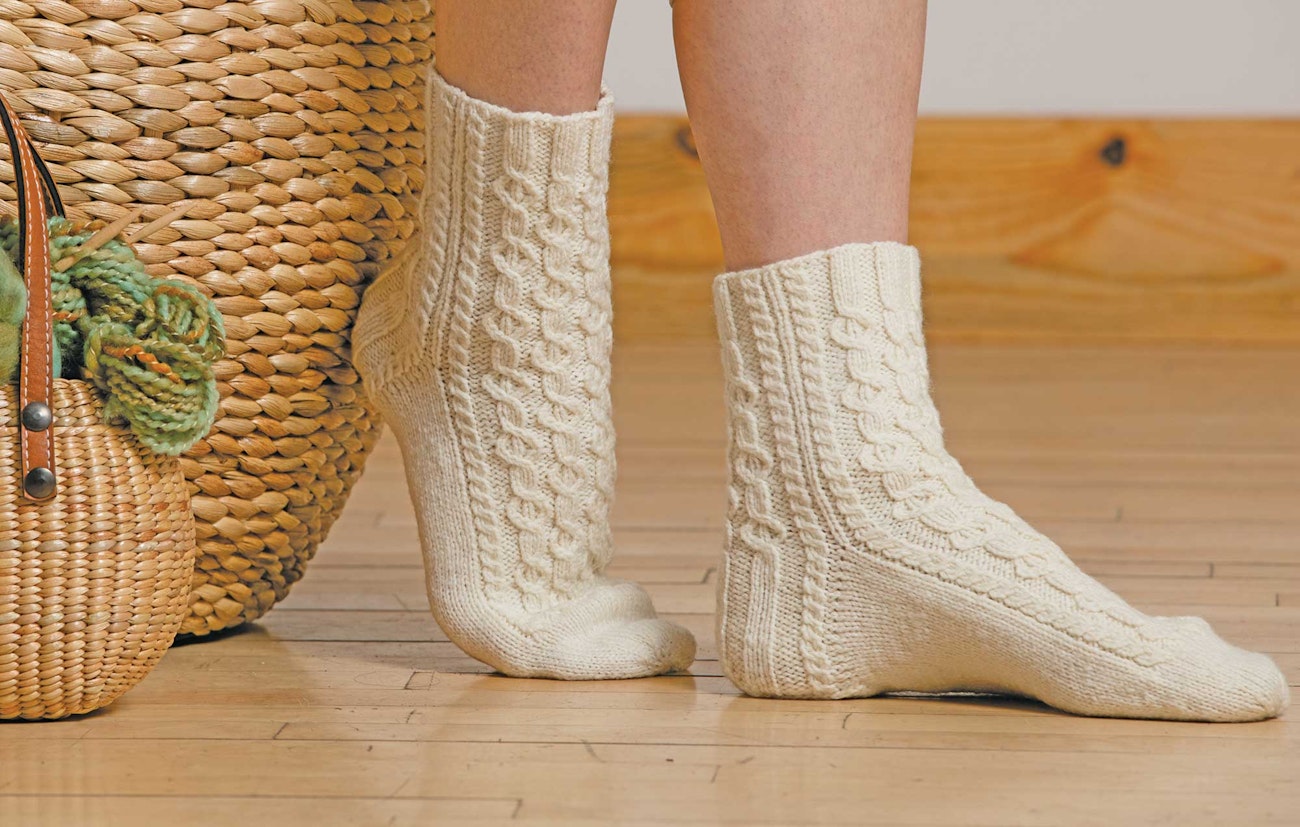 Tuck these cozy Double-Cable Socks into your spinning bag for guild meetings, gatherings, and workshops. Photo by George Boe
Tuck these cozy Double-Cable Socks into your spinning bag for guild meetings, gatherings, and workshops. Photo by George Boe
3. Cool Your Heels
Like many spinner knitters, I have knitted loads of socks with the same heel technique—a flap worked flat in alternating rows of slipped stitches. I’ve tried other styles, such as band and afterthought heels, that I know fit me better. With my love for sock knitting stirring in my heart this winter, I want to dive deep into a heel study this year. First up: I’ll finish my Socks Fit for a Spinner from Spin Off Fall 2024 with afterthought heels, and then I’ll start spinning for a new pair of the Double-Cable Socks, which combines cabled handspun, a cable-knit motif, and a band heel. Find it in the Spin Your Socks 3 ebook or in Spin Off Summer 2017.
Spin Off Content Editor, Pamela Schultz
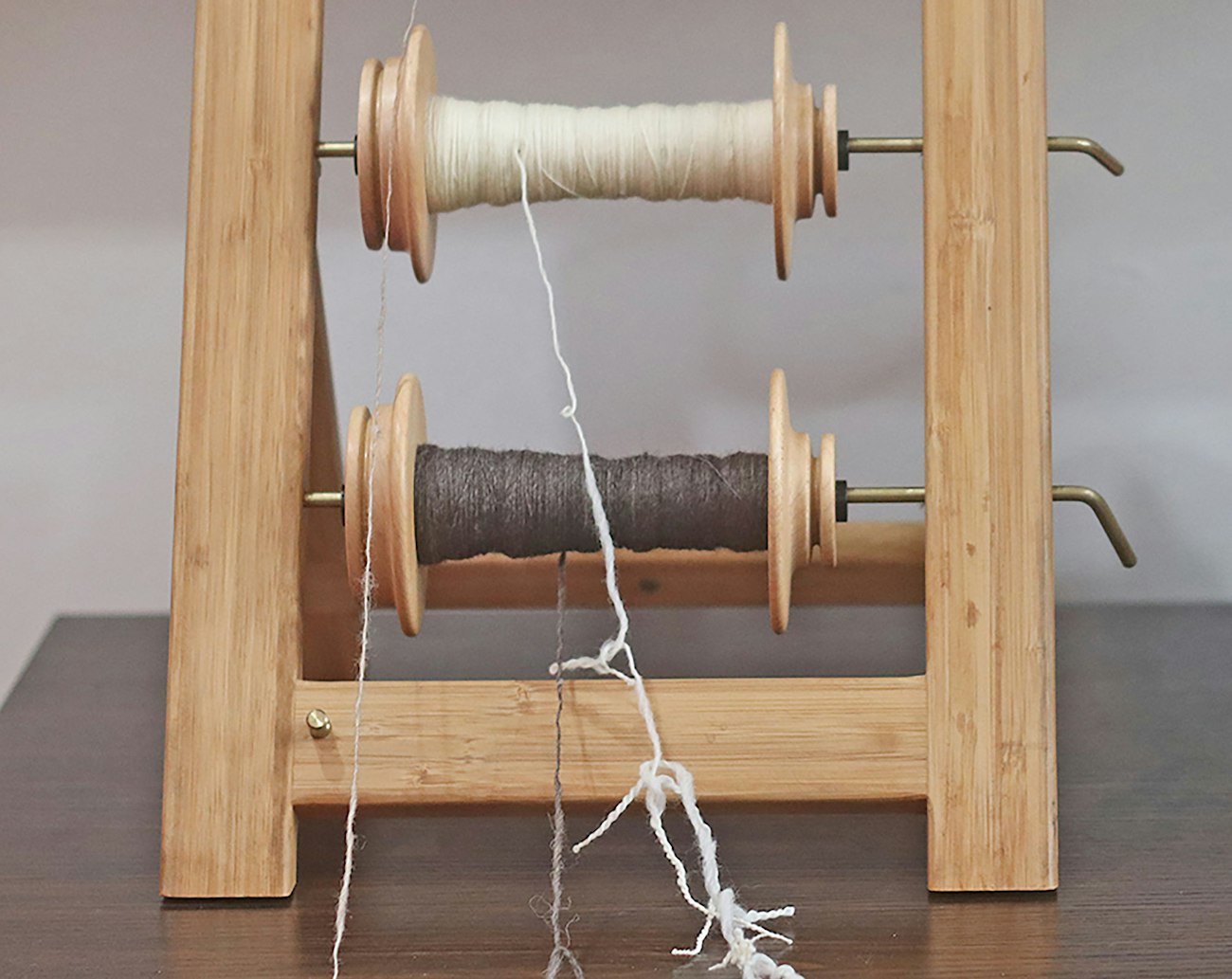 Emonieiesha Hopkins noticed the difference right away between her freshly spun singles and those that were allowed to rest. Photo courtesy of Emonieiesha Hopkins
Emonieiesha Hopkins noticed the difference right away between her freshly spun singles and those that were allowed to rest. Photo courtesy of Emonieiesha Hopkins
4. Rest Singles AND Remember to Ply Them
As I organized my spinning stash last fall, I found project after project where all the singles were on storage bobbins, and only one bobbin’s worth of yarn had been plied. It turns out that I’m great at spinning singles and letting them rest. Maybe letting them rest for three or four years is more than enough, so this year I resolve to ply a little bit sooner.
Find out more about resting your singles in Emonieisha Hopkins’s article, “To Rest, or Not To Rest, Your Singles Before Plying.”.
Then get some plying tips in Amy Tyler’s article, “Plying for Balance.”
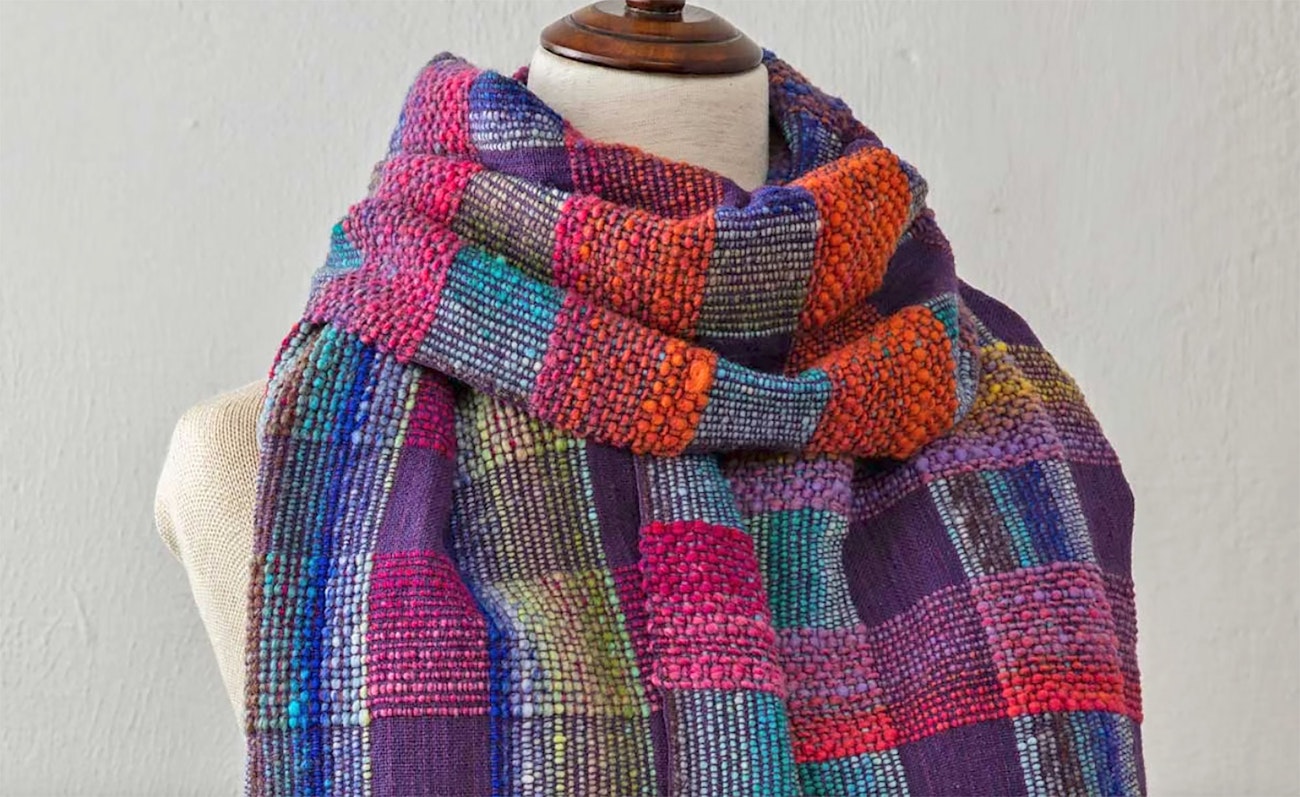 Véronique Perrot‘s Autumn Jewel Scarf uses knitting yarn in a design that combines blocks of diversified plain weave and plain weave. Photo by Matt Graves
Véronique Perrot‘s Autumn Jewel Scarf uses knitting yarn in a design that combines blocks of diversified plain weave and plain weave. Photo by Matt Graves
5. Weave a Jewel of a Scarf
The Autumn Jewels Scarf combines thick wool singles with a thin commercial cotton yarn for a scarf that’s full of texture and color. While the pattern calls for Noro Kureyon as the wool singles, it would be a great way to stashbust handspun odds and ends (or those singles I keep forgetting to ply).
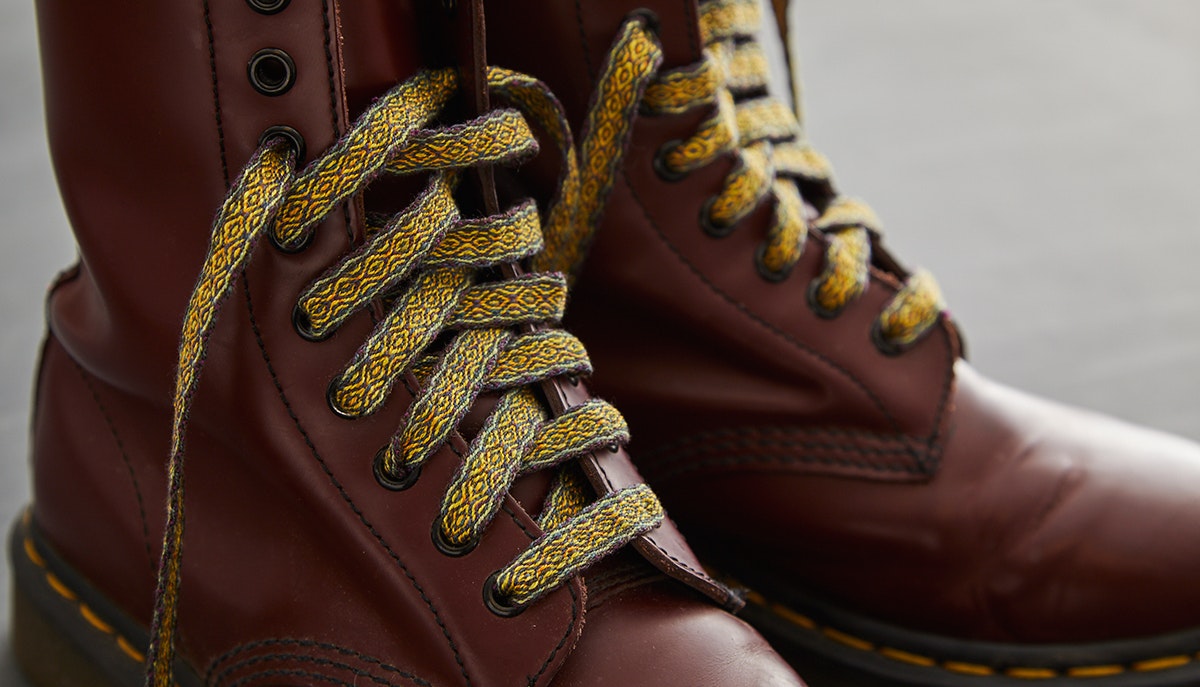 Shoelaces are a great beginning tablet-weaving project or a fun, quick project for tablet weavers with more experience. Photo by Matt Graves
Shoelaces are a great beginning tablet-weaving project or a fun, quick project for tablet weavers with more experience. Photo by Matt Graves
6. Spin and Weave a Pair of Silk Shoelaces
Every time I see someone tablet weaving, I think it’s the coolest thing ever. I’m hoping this is the year I finally wrap my head around the technique so I can make a pair of John Mullarkey’s Luxury Laces.
Spun from Bombyx mori combed silk top, a pair of shoelaces only takes 300 yards of 36 wpi two-ply yarn, a fun “spinning snack” in contrast to my usual sweater projects. Woven on an inkle loom, John promises it’s simpler (and quicker) than it looks.
Learn more about tablet weaving in John’s course, Tablet Weaving Made Easy.
Spin Off Associate Editor, Debbie Blair
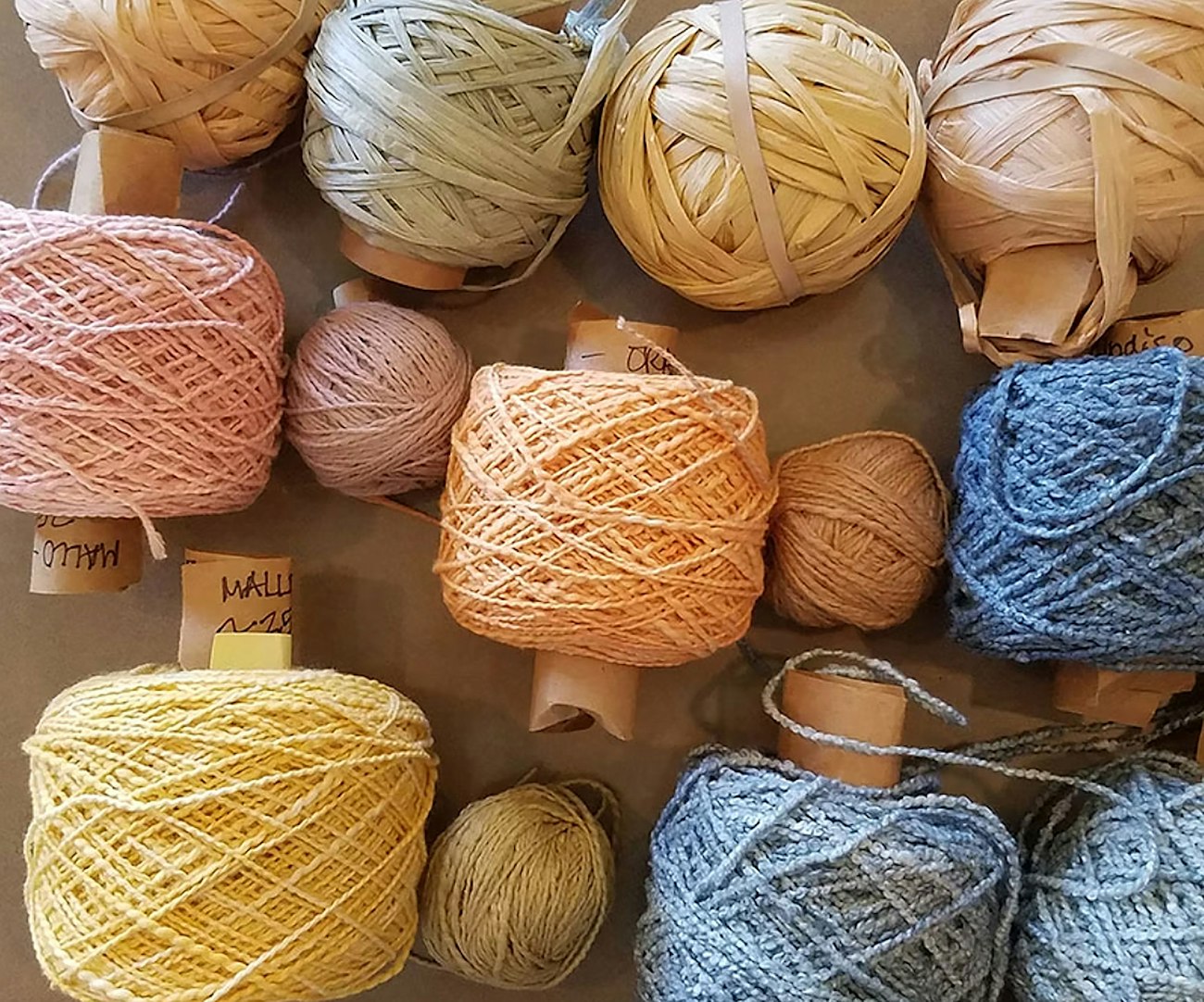 Balls of mud-dyed yarns including cottons and raffia. The colors are subtle in some cases, but beautiful. Photo by Susan E. Horton
Balls of mud-dyed yarns including cottons and raffia. The colors are subtle in some cases, but beautiful. Photo by Susan E. Horton
7. Dive in to Natural Dyeing
During the 2023 SOAR event, I had the pleasure of serving as the classroom assistant for Maki Teshima during her workshop on Japanese dyes. I even got to try my hand at using Bengara mud mineral dye on a piece of linen fabric and a small skein of my handspun! A sustainable way of dyeing, Bengara uses less water than other immersion dyes and is totally doable at my kitchen table (see how the Handwoven and Little Looms editors tried mud dyeing for themselves!).
In addition to doing more mud dyeing, it’s about time I try Annamarie Hatcher’s ideas for using kitchen scraps to add color to my skeins. Read her article, “Exploring Natural Dyes: A Wealth of Color from Your Compost”, then give it a shot!
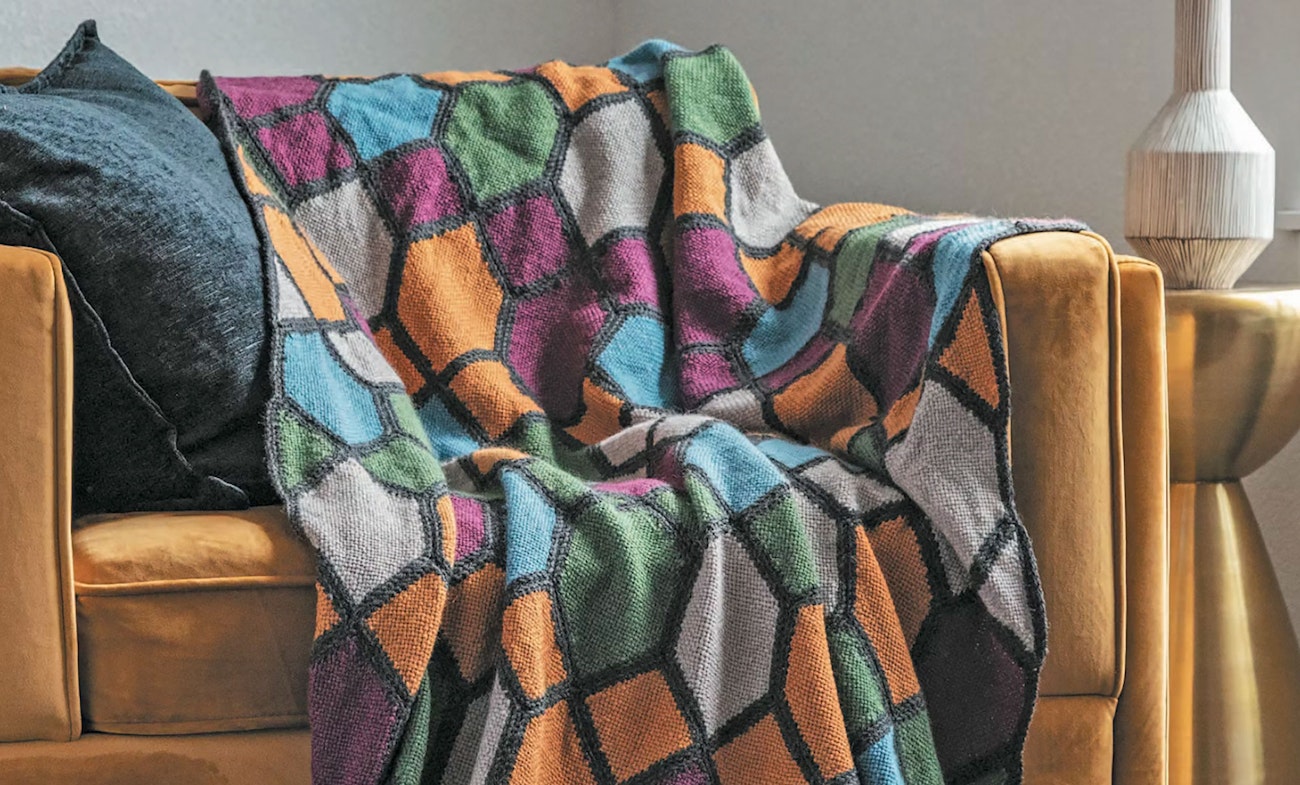 The Cathedral Window Blanket by Gabi van Tassell, found in the Fall 2022 issue of Little Looms, combines elongated hexagons and squares formed on the pin loom. Photo by Matt Graves
The Cathedral Window Blanket by Gabi van Tassell, found in the Fall 2022 issue of Little Looms, combines elongated hexagons and squares formed on the pin loom. Photo by Matt Graves
8. Weave a Little Somethin’ on the Pin Loom
For my busy lifestyle, any craft that I can work on in bite-sized chunks fits the bill. Each time my copy of Little Looms arrives in the mailbox, I find two or three covetable projects that are done using a square or hexagon pin loom, such as these beautiful hexagon projects. I’ll be able to work up one small square at a time and then join them together into a beautiful scarf, handbag, or table runner. Plus, it won’t take much of my handspun to make each hexagon and I can mix and match my skeins.
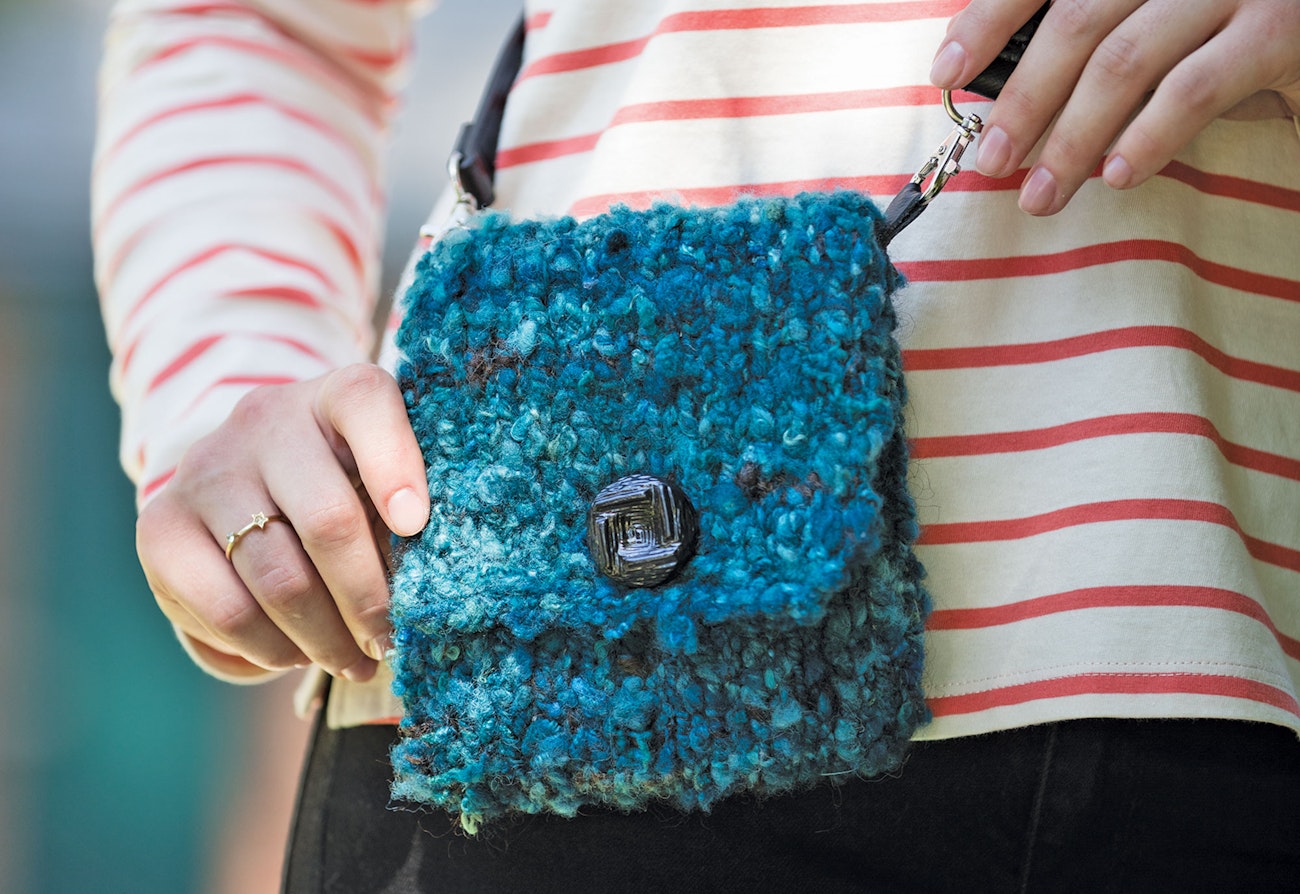 Just a little bit of art yarn can make a caressable accessory, like this adorable purse by Kathy Augustine. Photo by George Boe
Just a little bit of art yarn can make a caressable accessory, like this adorable purse by Kathy Augustine. Photo by George Boe
9. Spin Intentional Art Yarn
I haven’t quite gotten the hang of spinning super-consistent singles time after time. So I would actually classify much of my handspun as thick-and-thin. But then again, I do love the look of chunky textured yarn. And skeins that are full of color? Even better!
Inspired by the photos of Debbie Held’s textured handspun yarn, I vow to spin beautiful (deliberate) textured yarn by first watching Esther Rodgers’s video, How to Spin Art Yarns. Once I get the hang of it, I’ll put my art yarn to use and knit this adorable Locked Up Bag.
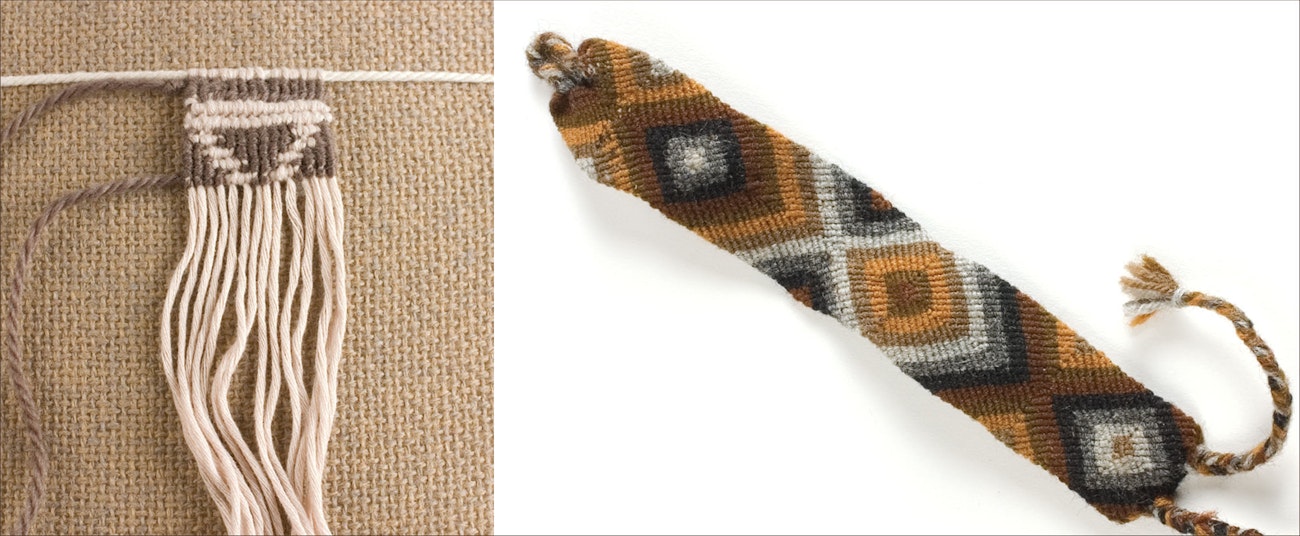 The Cavandoli friendship bracelet pattern lines move diagonally, but this technique is often worked horizontally. Photos by Ann Swanson
The Cavandoli friendship bracelet pattern lines move diagonally, but this technique is often worked horizontally. Photos by Ann Swanson
10. Learn Cavandoli Macrame
I love reading the end-of-year “wrap up” posts, listing the most-liked, most-visited, most-dowloaded articles across several communities I follow. As I browsed through the list of PieceWork readers’ favorite articles and projects of 2024, the Cavandoli friendship bracelet caught my eye. A form of macrame, Cavandoli utilizes three knots: the half hitch, overhand, and lark’s head. Having learned these particular knots when I was first learning to make jewelry, I know I can use some of my handspun to make one of these Cavandoli-style bracelets or a bookmark.
Have fun trying something new this year! —Spin Off editors
More resources to help you on your journey to trying the techniques listed above:
Mending
“A Spinner’s Take on Visible Mending—5 Top Tips.”
Handspun Cotton
Spinning Cotton Video Download.
“Ideas for Using Your Handspun Cotton Yarn.”
Plying
How to Ply: A Guide to Plying on a Spindle or Wheel eBook.
New Spinner's Guide to Plying Video Download.
Weaving
Long Thread Media weaving courses.
Natural Dyeing
“Natural Dyeing Safely at Home”.
“Dye Recipes from Your Kitchen Cabinets”.
Pin Looms
“Why Pin Looms? Well, Why Not Pin Looms?”.

